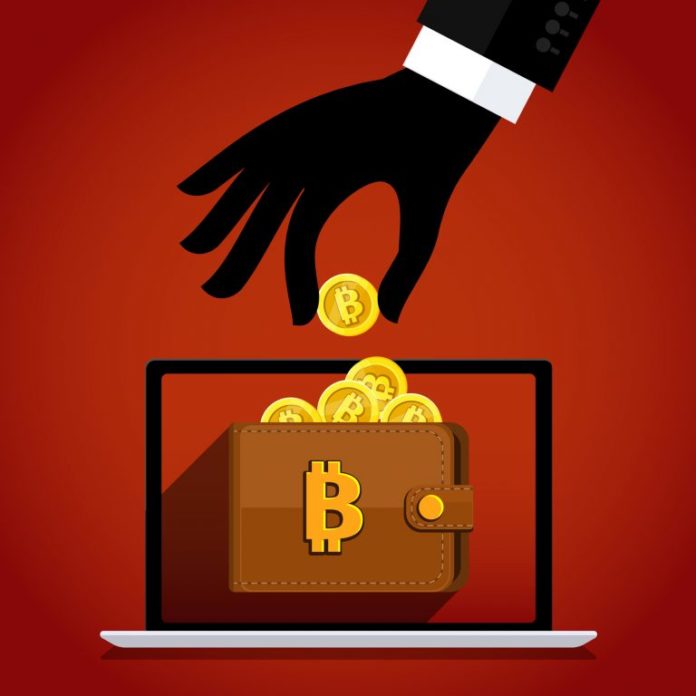
OCT trading involves high value deals that can run into the hundreds of millions of dollars. Whales want privacy and zero slippage, which isn’t possible on a cryptocurrency exchange, while buyers want large quantities of bitcoins at below market rates. It’s an arrangement that suits both parties, but for it to work, trust is essential as the cautionary tale of a $600 million OTC scam shows.
Also read: India Bitcoin Caper: 10 Cops Busted Over Kidnapping and Extortion
The 99,848 Bitcoin Deal That Almost Went Through
On April 2, Miles, an OTC bitcoin broker, left Europe for Singapore. During the 12-hour flight, he had plenty of time to reflect on the 99,848 BTC sale he would be closing, in return for which he would pocket a 1,000 BTC commission. News.Bitcoin.com has spoken to multiple sources involved with the deal on the condition of anonymity, and has viewed the letter of intent (LOI) and other supporting documentation. Prior to Miles (not his real name) flying to Singapore, several weeks of due diligence and negotiations on behalf of buyer and seller had been conducted, as is customary.

The buyer had $700 million they were looking to invest in bitcoin, while the seller possessed 99,848 BTC valued at around $617 million. The LOI specified that these would be sold at market rate minus 12% discount. Upon arrival in Singapore, Miles would be met by Daniel (not his real name), a local broker who had set up the deal. By the time the two brokers met face-to-face, however, they had developed concerns about the shadowy Asian seller. Miles explains:
I had brought several buyers to this seller. The seller requested to be fully anonymous and we were told he would only appear during the actual transaction itself. They had a strict procedure that must be adhered to at all costs and they refused to send satoshis.
It is common practise for a seller to send a small amount of BTC to establish ownership of the wallet. In this case, the seller had provided proof of ownership by sharing a video showing them logging into the wallet via Blockchain.info.

Miles later acknowledged: “Daniel was a referral for me when I was looking for a local third party blockchain individual that could help me validate coins and perform the transfer. He was surprised I got it to a point where they were about to wire funds next. He was suspicious from the beginning but never uncovered as much info as I did.”
Red Flags Are Raised
 Daniel explains how the buyer mandated that the brokers were only entitled to liaise with his representatives. Miles recounts: “I had questioned the authenticity of the deal and took it all the way to the end until the deal date. Then we pulled out [at the] last min when we realized the seller was [attempting to sell coins they did not have ownership of]. The seller was 100% distanced from the transaction and the funds were deposited and laundered through the China Railway account, forcing the buyer to sign ‘investment into China Railway’ documentation.”
Daniel explains how the buyer mandated that the brokers were only entitled to liaise with his representatives. Miles recounts: “I had questioned the authenticity of the deal and took it all the way to the end until the deal date. Then we pulled out [at the] last min when we realized the seller was [attempting to sell coins they did not have ownership of]. The seller was 100% distanced from the transaction and the funds were deposited and laundered through the China Railway account, forcing the buyer to sign ‘investment into China Railway’ documentation.”
As Miles explains, there were red flags from the very outset, though these were tempered by the fact that the seller had shown video proof (presumably faked) of them accessing the wallet. The warning signs included:
- Seller’s refusal to send a satoshi
- Seller wanting the money fully cleared into their account before handing the info over
- Seller wanting no escrow
- Seller wanting no KYC/AML
- Seller’s name not appearing on any documents or on the actual mandate (instead they were signed by his intermediary)
- Seller wanting the entire wallet sent in one transaction instead of breaking it up
The seller purported to be a Malaysian miner with over 93,000 BTC in their wallet, a figure that was growing by the day and that they were now looking to offload. Upon meeting up in Singapore, the seller would use their laptop and login to show their balance and then change the email address on Blockchain.info to the buyer’s preferred email address. Once the buyer received an email from Blockchain.info, Daniel explains, “the HK side will make payment. Once funds are received, the envelope will be passed to the buyer side in Singapore.”
We will unseal the envelope and log in using the information provided in the envelope. We will then check the balance, proceed to sweeping of the wallet, install Electrum on Ledger Blue, encrypt the wallet with multi-sig function, use Electrum to sweep the Blockchain.info wallet and slowly transfer the coins over to the buyer…Proof of funds is via tearsheet or bank statement to show the balance of money within is enough for the BTC based on Blockchain.info price…If there is a need to sign an NDA it will only be between the reps as the seller only wants to sign the contract and deal.
A Bitstamp Address Was the Final Straw
The brokers involved in the deal had been suspicious from the outset, but given its value to all parties, they were willing to keep it on the table while they awaited further verification. Their suspicions were confirmed, however, when they discovered that viewing the wallet address on Bitinfo’s block explorer showed it to be labeled as the Bitstamp cold wallet, which the seller clearly had no access to. They also learned that the seller had tried to broker the same deal with a number of other OTC buyers, all of whom also backed out after investigating further.

Chad, an OTC broker for Counter Party Media, had no involvement in this deal, but knows of others who have been offered an exchange wallet “for sale” including one belonging to Bitfinex. He told news.Bitcoin.com: “The amount of procedures I see like this from some sellers is frightening. It’s an immediate red flag for me. The safest way to transact is to have either buyer or seller onboard themselves with an escrow platform or tier 1 solicitor. Get them to pass KYC/AML first and have coins and funds attested to. This way you know your buyer or seller is ready to engage in a legitimate transaction and it eliminates any risk.”

With only a handful of OTC whales in possession of high value wallets, deals of this magnitude are rare. But with hundreds of millions of dollars at stake, the incentive for bad actors is high. As for Miles, he caught a plane home to Europe the next day, disappointed to have lost out on his 1,000 BTC commission, but grateful not to have gotten embroiled in one of the largest scams in bitcoin history.
Do you think OTC selling is riskier than cashing out large amount of BTC through an exchange? Let us know in the comments section below.
Images courtesy of Shutterstock and various sources who contributed to this story.
Need to calculate your bitcoin holdings? Check our tools section.
The post How an OTC Bitcoin Scammer Almost Stole $600 Million appeared first on Bitcoin News.

Bitcoin.com is author of this content, TheBitcoinNews.com is is not responsible for the content of external sites.
Our Social Networks: Facebook Instagram Pinterest Reddit Telegram Twitter Youtube










